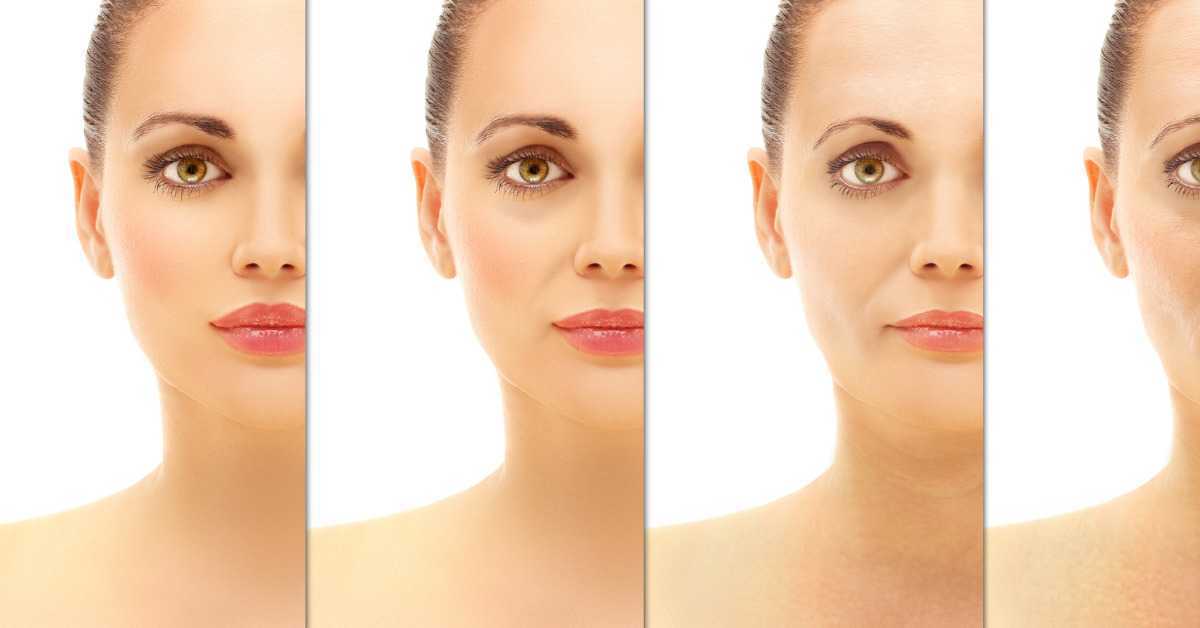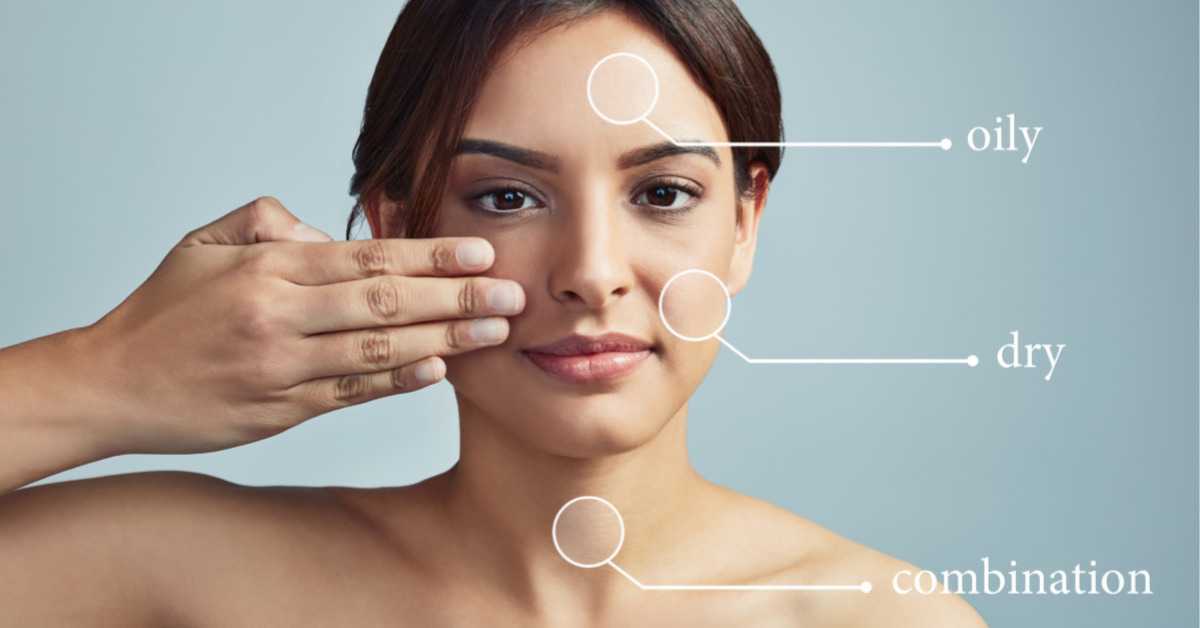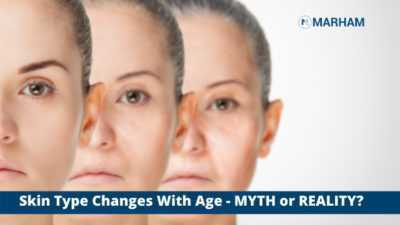For decades, the cosmetic industry has pushed this concept “particularly developed for aged skin.” Is this true? “Does your skin type change with age”- Myth or Reality?
While our skin changes with time, it has very little to do with our numeric age.
Our skin undergoes several changes as we age. Various life events, such as pregnancy, stress and menopause, can cause hormones to vary. This change results in a noticeable shift in your complexion. Everyone loves to have beautiful, flawless skin at every age of their life. So to practice the most effective skincare, it is essential to know your skin type regardless of age or stage of life. Read more to learn more about various skin types.
Does Your Skin Type Change with Age?


The truth is that a person in their twenties may have the same hereditary skin type and skin issues as a person in their fifties. For example, a person may have acne in their youth and continue to have it well into retirement.
A young individual who has spent a lot of time in the sun, on the other hand, may encounter dullness, pigmentation, and fine lines sooner than expected as a result of their lifestyle. Indeed, a skin type changes, but the numeric age is not the sole factor changing it. Several factors, including genetic, environmental, and lifestyle, play a significant role in changing skin type.
Views of American Academy of Dermatology (AAD)
When it comes to our skin, we have control over extrinsic aging, according to the American Academy of Dermatology (AAD). Our skin can age prematurely due to environmental and lifestyle factors.
The AAD suggests taking preventative measures such as:
Shielding oneself from the sun
Regular exercise
Balanced diet
Good sleep
Being hydrated
Utilizing the products that suit you the most.
Avoiding items like smoking may have a significant impact on preventing skin aging.
It is impossible to change our skin type by itself; our skin changes and adapts throughout time. Let’s look at some of these changes and how they might influence your skin as you age.
Different Skin Types


The American Academy of Dermatology (AAD) classifies skin into five categories:
1. Dry Skin
When a person has dry skin, it generates less sebum than it requires.
2. Oily Skin
When a person has oily skin, it generates more sebum than it requires.
3. Combination Skin
People with mixed skin will have oily patches on their skin while other parts will be dry. The T-zone, which includes the forehead, nose, and chin, is prone to oiliness. The cheeks or other areas of the body may feel normal or dry.
4. Sensitive Skin
Sensitive skin is easily irritated or inflamed.
Sensitive skin is easily irritated or inflamed.
5. Normal Skin
Normal skin is not particularly oily, dry, or sensitive skin. This skin type generates enough sebum to keep the skin moisturized but not oily.
Factors Determining Skin Type


People mostly said; my skin type changed from oily to dry, is it possible? Yes, your skin might go from oily to dry, combination, or sensitive. But this does not happen by itself. Some factors may cause slight or significant changes in your skin type. The following factors determine what type of skin a person could have.
Genetics
The most important factor is your genes, which determine how dry/oily or sensitive your skin is.
Climate
Moving to a new location might alter your skin type.
Hormones
Our hormones change at different points in our life, which might alter the behavior of our skin.
Medications
Your drugs may cause your skin to become drier or more sensitive as a side effect.
Allergies/Diet
Your daily sips may undoubtedly impact your skin, for better or worse. Consult a dermatologist if you suspect a food allergy is causing your skin problems.
Skin Care
Using the incorrect formula for your skin type might upset your skin’s equilibrium.
Finding Out Your Skin Type


By reading so far, you may be now thinking what my skin type is; well, here is the guide for you.
- Get a mild cleanser to wash the face.
- Dry with a clean towel
- Notice how the skin appears and feels just after washing and how it changes in the following hours.
- Shortly after washing, Dry Skin will feel tight or dry. It might also appear dull, gritty, or flaky.
- After washing, Oily Skin may appear matte, but it may turn glossy or greasy within a few hours.
- Combination Skin has an oily T-zone and normal to dry cheeks.
- Normal skin should seem clear, even in tone and texture, and not feel tight or itchy after bathing. It will not change much throughout the day.
- After a wash, Sensitive Skin may hurt, burn, or itch.
Although our skin’s “type” may not change totally as we age, our skin will undergo several modifications with each new decade of life. We must take good care of it with preventative measures and products. We owe it to our skin for standing with us all these years!
You should consult the Best Dermatologist to know precisely your skin type. They can tell you the exact cause of your skin type change and what skincare plan you need to adopt.
| Android | IOS |
|---|---|
  |
  |
FAQs
1. Can skin type change from oily to dry
Environmental variables, age, hormones, and other health-related concerns, make your skin type change over time.
2. Can your skin tone change naturally?
Yes, your skin tone can change naturally by following a good skincare guide suggested by an expert and adopting a healthy lifestyle.
3. Does skin type change with the season?
Most specialists believe that our skin type does not always vary with the seasons. It is influenced differently as a result of environmental changes.
4. How to change your skin type from oily to normal?
- Wash your face regularly
- Apply a toner.
- Get blotting sheets and medicated pads to dry your face
- Apply a face mask
- Use moisturizers.

